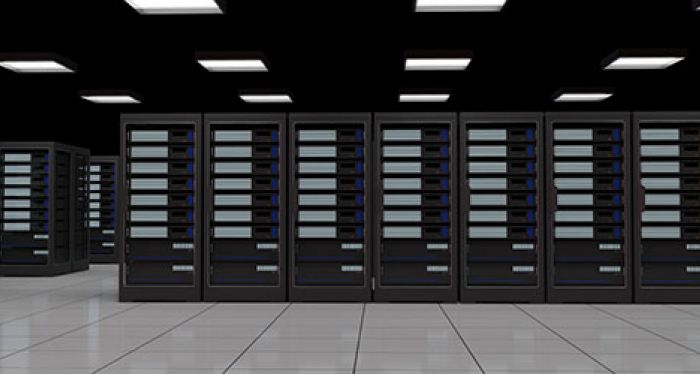Cloud
Views, News & more
Apr
19
Breaking Up with On-Premises Servers: It’s Not You, It’s Them
In long-term relationships, there may come a point where things are no longer working for both parties. The current situation is adequate but slowly getting worse.
Most organisations have had a multi-decade relationship with on-premises servers. But now that cloud services have improved, it’s no longer a given that this relationship will last.
Jun
27
Can Anyone Catch AWS Now?
Amazon, Azure and Google capture 65% of cloud infrastructure spending, with Amazon receiving almost one pound in two spent with the big three cloud providers.
May
12
Microsoft's Bold Move to Ensure Email Security: Blocking Outdated Servers
If you use Exchange Online you're about to start missing out on some emails.
And if you have your own Exchange Server, your emails could get blocked if you don't keep your server patched.
May
03
Why the Big Clouds Aren't The Best Hosting Option for Many ISVs
If you're looking to level-up your software firm by offering SaaS, good hosting is vital to delivering the level of availability your customers expect.
The big clouds (AWS, Azure and Google Cloud) are fantastic, but they're not the best choice for typical independent software vendors.
May
02
18 Ways to Cut Public Cloud Costs WITHOUT Ruining Performance
Organisations that switch to the big public clouds often find themselves paying more than expected.
If you're in this situation, here are some ways to cut your public cloud bill without materially harming performance:
Mar
06
Exchange Server 2013: End of Support Looms
On April 11th 2023, Microsoft support for Exchange Server 2013 ends.
Microsoft will no longer provide security fixes for vulnerabilities discovered after that date, leaving Exchange Server 2013 instances vulnerable to security breaches.
In addition, Microsoft won't fix other Exchange 2013 bugs or provide related technical support.
Nov
28
Could Your Servers Suffer Power Cuts This Winter?
John Pettigrew, CEO of the UK energy distributor National Grid has warned that Britain could face blackouts this winter.
Nov
04
Public Cloud Costs to Rise "at least 30%" in 2023 Warns Analyst Firm
Steve Brazier, President and CEO of tech market analysis firm Canalys, has warned that public cloud prices are set to rise.
Speaking at the Canalys Channel Form EMEA 2022 in late October 2022, Brazier said...
Sep
05
Cloud's Now the Default - But What Does That Mean For YOU?
In Q4 2021, for the first time, more money was spent on cloud infrastructure than non-cloud infrastructure, according to IDC.
This shift to the cloud offers significant benefits for IT professionals and their organisations.
IT Pros: Less Server Grunt Work
Aug
26
Trillion Transistor Chips on the Way - Intel
Intel has said it expects the number of transistors on chip 'packages' to rise from 100 billion to 1 trillion by 2030.
A trillion might catch the headlines but it's the ten-fold increase in processing power that should catch your eye.
Aug
19
Servers Heading Towards 100Gbps Connections
Aug
09
Big Cloud Means Old Hardware?
It's tempting to assume that if you go to the big public clouds, you're going to benefit from the latest hardware, but that's not necessarily the case.
The biggest public cloud providers are trying to use their older hardware for longer than before.
Jul
29
Google and Oracle Clouds Hit By Heatwave-Related Outages
July 2022 saw record temperatures in England. It wasn't just the humans that were suffering. Several public cloud providers were too.
Jul
19
World's Largest Data Leak Shows Private Cloud Isn't Always Best
Many people assume that dedicated private clouds are more secure than virtual private clouds hosted on public clouds. All else being equal, that should be correct as dedicated clouds are protected against the largely theoretical risk of co-tenants breaking through the logical partitioning keeping tenants apart on multi-tenanted hosting platforms.
Jul
08
Azure Nears Capacity Constraints?
Surging demand for Azure's public cloud services has crashed into the global microchip shortage, according to recent media reports.
Jun
30
Fab Advance Will Cut Cloud Hosting Costs
Mobile, tablet and server processors are getting faster and cheaper to run. In June 2022, Samsung has started mass-producing 3nm chips with 23% better performance than 5nm chips, drawing 45% less power and requiring 16% less space.
Jun
29
How to Keep Your Public Cloud Resources Secure
You rely on the public cloud. Is it secure? Wrong question.
You should be asking... how is it insecure currently, do those insecurities impact your cloud setup, and what can you do about them if so? A new database answers two of those questions.
May
16
Cloud is Now The Default Choice for New Infrastructure Says IDC
If your next server or storage device is hosted at your office, you'll be in the minority, according to the market research firm IDC.
In Q4 2021, more money was spent on cloud infrastructure ($21.1bn) than on non-cloud infrastructure ($17.2bn).
The figures come from IDC's report "Worldwide Quarterly Enterprise Infrastructure Tracker: Buyer and Cloud Deployment."
Jun
25
The environmental impact of cloud migration
It is well known that moving from an on-premises infrastructure to a cloud-based architecture can deliver instant benefits to businesses in terms of agility, scalability and cost-efficiency. When considering a cloud migration, the environmental implications might not be one of the foremost matters in a company’s decision.
May
05
How to plan and execute the perfect cloud migration for your business
Cloud migration is one of the biggest trends in business today, with organizations of all sizes and types migrating their operations to the cloud at an unprecedented and rapidly accelerating rate.
With benefits such as cost savings, added value, increased security, flexibility and scalability, it’s no wonder that businesses are migrating in such great numbers.
Apr
01
Financial services: A sector undergoing a hybrid cloud revolution
In the fast-moving world of financial services, technological changes are usually afoot and 2021 is proving to be no different. One of the latest trends driving change within the sector is the increasing number of firms moving to a hybrid cloud infrastructure, a cloud solution that mixes elements of both public and private cloud.
Mar
04
Why cloud is the perfect match for the construction industry
The use of cloud computing in the workplace might, for most people, conjure up images of bustling, high-tech inner-city offices or colleagues in disparate locations collaborating seamlessly on the same project.
Nov
03
The six R’s of migrating applications to the cloud
The six R’s of migrating applications to the cloud
In this piece, we’ll examine six different strategies to help you migrate your applications to the cloud. These six strategies, the “six r’s”, are the most common strategies undertaken by companies migrating their applications to a cloud infrastructure.
Sep
22
Private cloud: The different options, the benefits and the drawbacks
If you’re considering a cloud-based infrastructure for your business, you might have heard about private cloud and be wondering whether it’s the solution for you. Before you make that decision, it is, of course, important to know what “private cloud” means.
Jun
18
Post-Migration: Protecting Against Performance Deterioration and Increasing Costs
You’ve completed your cloud migration and everything is running smoothly. However, this isn’t the time to crack open the Champagne and put your feet up. Now is when the hard work really starts!
May
04
Harnessing the power of remote work with the cloud
The coronavirus crisis has prompted companies to resort to remote working on a scale that has likely never been seen before. Across the world, businesses are grappling with the issues raised by their entire workforce going remote.
Mar
02
Tips for organisations getting started with cloud containers
Cloud container technology can offer some great tools to help ship and package applications. However, organisations using containers are still a little confused about how to get the best performance from containers.
Feb
19
The 4 key advantages to adopting a hybrid cloud system
When it comes to choosing cloud solutions for a business or organisation, it can be tempting to pick and choose different aspects from different types of solutions to create a system that has the best combination of features.
Feb
05
Make sure your cloud is optimised for the year
The growth of cloud computing has accelerated rapidly in the past few years, becoming a serious consideration for businesses great and small. However, with IT departments increasingly dabbling in the cloud rather than on-premises infrastructures, it’s now necessary for companies to ensure they are spending enough to remain fully optimised.
Pages
Get in touch
020 7847 4510
We may process your personal information in order to send you information you request, measure and improve our marketing campaigns, and further our legitimate interests. For further details, see our privacy policy.
Contact us
-
- Head Office:
- hSo, 50 Leman Street, London, E1 8HQ
- Switchboard:
- 020 7847 4500
- Support (24x7):
- 0333 200 3337
- support@hso.co.uk
- Marketing & Sales:
- 020 7847 4510
- info@hso.co.uk














































